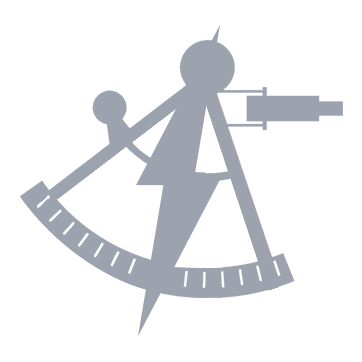Summary
A former conn officer, Captain Greg Conrad has been commanding the U.S.S. Resolution [NCC-72705] for about a year. Under his leadership, the ship and crew have gained a reputation for versatility befitting the mission profile of the Rhode Island-class. Conrad prides himself on being able to get the most out of a crew that most Starfleet captains — including his division commander, Captain Percival Hawthorne III of the U.S.S. Nebula [NCC-60147] — would call misfits.
Appearance
Most beings’ first impression of Greg Conrad is that he is approachable and charming. His symmetrical face is clean shaven and he keeps his light brown hair neat and regulation. He maintains a good physique in compliance with Starfleet fitness standards for humans.
Personality
Captain Conrad’s affable nature is well-suited to the command to which he is assigned. He chooses to be more involved in the Resolution’s crew community than captains of ships with larger complements. As such, his crew respects him, and regularly invites him to participate in lower decks activities. In moments of solitude, he misses his wife, Commander Angela Rodriguez, and always speaks of her with a great deal of sentimentality, but only with close friends. With superiors, he can be abrasive, especially if it means standing up for his crew, perhaps explaining why he has not attained a more prestigious command.
History
Gregory Conrad’s family was among the first to recolonize Cestus III in the 2340s. He was born there, in Pike City in 2362. His parents owned and ran a farm, growing vegetables in the fields and apples, pears, and peaches in the orchards. Greg’s father taught him to fly the family’s crop duster, and in his early teens the young Greg was piloting the craft for his parents and teaching himself aerial acrobatics, often drawing the ire of his father and overprotective nagging from his mother.
At a nearby spaceport, Greg and his friends would frequently badger the visiting freighter captains for stories of their travels. That marked the beginning of his fascination with space and exploration. When he was 16, he and his family traveled to Earth to visit extended family on both sides. While there, he and his mother toured Luna, and she took him to the site of one of the human moon expeditions from the late 20th century — Apollo 12. That mission was led by one of Greg’s ancestors, Charles “Pete” Conrad. Seeing the site of that landing, the remnants of the ancient spacecraft that brought humans from Earth to the moon, inspired Greg even further. Back on Earth with his family, he stole away from the reunion and beamed to San Francisco to see Starfleet Academy, learning about the flight training program there, and how to apply. Armed with that information, when the Conrads arrived back home at Cestus III, he announced his intention to become an Academy cadet.
Greg endured the plebe experience the same as his fellow first-years. He was assigned to Yeagher Squadron, the only squadron at Starfleet Academy named for someone who had never traveled in space. He managed to snag a position on the Yeagher Squadron flight team, where he met an Andorian named Oshras Rybal, another plebe, but brilliant enough to be assigned to the flight team’s engineering crew. The two became fast friends.
Another important relationship he forged at the Academy was a rivalry with Zarkon Squadron flight leader Angela Rodriguez. Both cadets frequently traded places at the top of the flight range time record board. The rivalry sometimes extended to practical joking, and on more than one occasion involved them being dressed down by the flight range officer for unsafe flying.
Graduation came in 2383. The night before, during an alcohol-fueled argument, Conrad and Rodriguez ended up in her bunk in the Zarkon barracks. The next day, embarrassed and shocked, they chalked it up to nerves heading into graduation and their first assignments, and coolly parted ways.
Although he and Rybal were separated by their first assignments as newly minted ensigns, they kept in touch. While the Andorian impressed his superiors with his freakish intellect and natural technical skills, Greg struggled to find his footing as a junior officer aboard the U.S.S. Ascension [NCC-10525], an older Ambassador-class starship. He could fly just fine, but his relationships with the officers above him and the enlisted crew placed under his own command was hampered by his discomfort with shipboard life, which was so different from the Academy. On the Presidio campus he had been a hero figure for younger flight cadets. Now Greg was just one ensign among many, answering up a chain of command that ended with a captain he very rarely saw.
That changed, though, when he received a helpful piece in one of his correspondences with Rybal. One night, after saving up credits by avoiding the ship’s commissary, he managed to stake himself into a poker game hosted by the Ascension’s senior flight control officer. Greg had been a regular card shark in the Yeagher Squadron wardroom. So good at the game was he that he could fake being bad at it, which endeared him to the higher ranking officers who were eager to pad their credit accounts. Slowly, Greg became more comfortable among the junior and senior lieutenants, who began to see the young ensign as a peer. He started getting invited to off-duty parties, set up on dates with women who would ordinarily have been out of his league — two, three, even five years older than he, including a couple of lieutenant commanders.
As his ease with socializing among his fellow officers improved, his name started appearing on the promotion list. Two years after reporting aboard the Ascension, he found his name among the officers recommended for lieutenant (junior grade). Now, as fresh young ensigns came on board, he would not only have experience over them, he would have rank.
That promotion, coupled with his popularity among the Ascension junior officer corps, lit a fire in him, sparking ambition in the young officer. He approached the senior flight control officer, a jocular Bolian named named Uri, about bridge command officer training. Greg wanted to be qualified to sit in the center seat whenever the watch officer was called away, took a meal break, or had to go to the head. Uri took Greg under his wing, and administered the training. In six months, he completed all the tests and earned the endorsement for his personnel file.
In that same year, Starfleet’s shipbuilding efforts suffered a major blow when the synths assigned to Utopia Planitia Fleet Yards on Mars attacked their human overseers on the surface, and destroyed shipyard facilities in orbit of the red planet. Not only did that cripple Starfleet’s ship production, but it slowed up repair efforts across the fleet, as several older ship’s were taken out of mothballs to make up for the loss in production. Additionally, ships would have to make do with what they had rather than putting in for refits at the normal schedule. For officers on the rise, like Greg, it meant adapting to changing times — a chance to shine in the wake of a terrible disaster.
For the next eighteen months, Greg took those opportunities and more. He was put in charge of shipboard mission priorities like astrometeorogical studies and routine activities like supervising shuttlecraft maintenance. Once, when he had finally been brought to the captain’s attention, he was even trusted to lead a minor away team mission.
At the end of those months, he was promoted to full lieutenant, and transferred, at Uri’s recommendation, to the U.S.S. Renegade [NCC-75420], a Defiant-class escort as senior flight control officer.
Once again, Greg’s promotion was marred by an intergalactic calamity. The Romulan supernova, predicted years earlier, claimed Romulus and Remus. With no support from the Federation, in the wake of the synth uprising, for mass evacuation of the two planets, close to a billion Romulan citizens perished.
The catastrophe wrought havoc with pan galactic relations. Starfleet abdicated its footing as an exploratory arm of the Federation. Officers who were veterans of the Dominion War found themselves decades later serving the fleet in a quasi-military fashion. Officers like Greg, who had missed the war, felt knocked off balance, unsure of how to react to the abrupt turn of events.
In the midst of the galactic turmoil, the decimation of a sizable number of the Starfleet officer corps in the Mars disaster, and because of the Renegade’s small crew complement, Greg became a senior officer practically overnight. Whereas the Ascension was a large exploration-type starship, slow to respond to her helm, the Renegade was comparatively nimble. Greg found himself having fun at the conn, taking advantage of the Renegade’s maneuverability and speed when chasing pirates, closing the distance quickly to give the tactical officer a reliable firing solution on the ne’re-do-wells, and putting them within safe tractoring distance before the Ascension took them into custody. It was that or participating in fleet wargames, helping officers on the larger capital ships to test their strategies and hone their tactical skills.
After six years on the Renegade, Greg’s captain recommended him for the Starfleet Academy Command School. When Greg arrived back in San Fransisco and the Presidio campus, it looked smaller to him, an unexpected feeling. Also unexpected was one of his classmates — Angela Rodriguez. Like Greg, she was now a full lieutenant, poised to become first officer of the U.S.S. Phobos [NCC-80119]. Both officers had matured in the years since graduation. Both had stoked within themselves ambition for advancement. Although there were several other of their Academy graduating class in their command school cadre, they gravitated toward each other as study partners. Eventually, they started spending time together outside of class. No one was surprised when they started dating. They committed to staying together, even as their assignments took them apart.
Upon graduation, Greg and Angela were promoted to lieutenant commander, and they went their separate ways — Angela to the Phobos and Greg to the U.S.S. Nebula, under the command of Captain Percival Hawthorne III.
It was clear from the moment Greg reported to Hawthorne that they were distinctly different officers. Greg led by example, making himself visible among the crew. Hawthorne was detached, leading the Nebula through Greg, using the first officer as a buffer between himself and the crew.
The relationship between Greg and Hawthorne was strictly professional. Early on as first officer, Greg made a few overtures to the captain, inviting him to a weekly poker game he organized among the senior officers. Now, no longer needing to fake an ineptitude at cards, he called it “shearing the flock.” Hawthorne always politely declined. He and Greg only ever met one-on-one when absolutely necessary.
Four years into his tenure as first officer, Hawthorne performed one of only three favors he would ever do for Greg — he recommended him for promotion to full commander.
Even with his new rank, serving as first officer of the Nebula was challenging. Try as he might, he was never going to get to know the crew in the same way he had in previous assignments. There were too many of them, and each week a new batch of crew rotated on while one rotated off. He doubted he could ever serve as her captain, even though it would put him in a better position to get married (he and Angela had discussed the topic occasionally over subspace radio) and start a family. He knew he didn’t want a command like the Nebula, though — not knowing his crew as well as he knew his comrades on the Renegade.
Fate seemed to intervene on Greg’s behalf. Hawthorne’s request to become a division commander was granted, and the Rhode Island-class scout U.S.S. Resolution was transferred to his overall command. In 2401, when the Nebula was docked at Starbase Bravo, the Resolution arrived, and most of its officers, including its captain and first officer, were transferring off. Greg saw an opportunity, and asked Hawthorne to make him captain of the Resolution. That was the second favor.
The third favor was entirely unintentional on Hawthorne’s part. When the captain was looking for replacements for the vacant first officer position, one name topped the list — Commander Angela Rodriguez. If they weren’t serving on the same ship, at least they were serving in the same division.
Gregory Conrad assumed command of the U.S.S. Resolution on stardate 78146.5. He approached his new command with excitement. It was a new experience, being at the top of the chain of command, but he felt comfortable. He looked forward to assembling a corps of senior officers, developing them into a cohesive team, helping and watching them grow, and even bidding them farewell as they moved forward in their careers.
Service Record
| Date | Position | Posting | Rank |
|---|---|---|---|
| 2379 - 2380 | Starfleet Academy Cadet | Starfleet Academy, San Francisco campus |
 Cadet Freshman Grade Cadet Freshman Grade |
| 2380 - 2381 | Starfleet Academy Cadet | Starfleet Academy, San Francisco campus |
 Cadet Sophomore Grade Cadet Sophomore Grade |
| 2381 - 2382 | Starfleet Academy Cadet | Starfleet Academy, San Francisco campus |
 Cadet Junior Grade Cadet Junior Grade |
| 2382 - 2383 | Starfleet Academy Cadet | Starfleet Academy, San Francisco campus |
 Cadet Sophomore Grade Cadet Sophomore Grade |
| 2383 - 2385 | Relief conn officer | U.S.S. Ascension [NCC-10525] |
 Ensign Ensign |
| 2385 - 2387 | Junior conn officer/bridge command officer | U.S.S. Ascension [NCC-10525] |
 Lieutenant Junior Grade Lieutenant Junior Grade |
| 2387 - 2393 | Senior conn officer/bridge command officer | USS Renegade [NCC-75420] |
 Lieutenant Lieutenant |
| 2393 - 2394 | Starship command candidate | Sarfleet Academy, San Francisco campus |
 Lieutenant Lieutenant |
| 2394 - 2398 | First officer | USS Nebula [NCC-60147] |
 Lieutenant Commander Lieutenant Commander |
| 2398 - 2401 | First officer | USS Nebula [NCC-60147] |
 Commander Commander |
| 2401 - Present | Commanding officer | USS Resolution [NCC-72705] |
 Captain Captain |

 Bravo Fleet
Bravo Fleet






